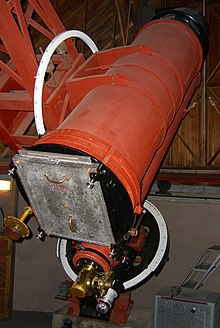When Clyde Tombaugh discovered Pluto, he painstakingly photographed portions of the sky using a 13-inch telescope at Lowell Observatory and compared images from successive nights, looking for objects that showed movement between images. Objects that moved over the course of a night would be within in our solar system.

Mr. Tombaugh used a device called a blink comparator which allows the operator to view two photographic images, rapidly switching between the two. The human eye-brain combination is exceptionally good at seeing changes in the images. Objects that showed movement could be noted for further investigation. Any moving body that appeared where no object was known to exist would be a candidate for an undiscovered asteroids or planet.